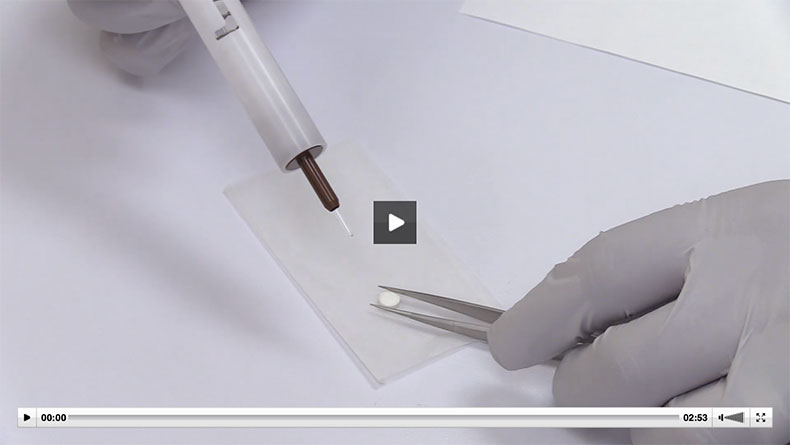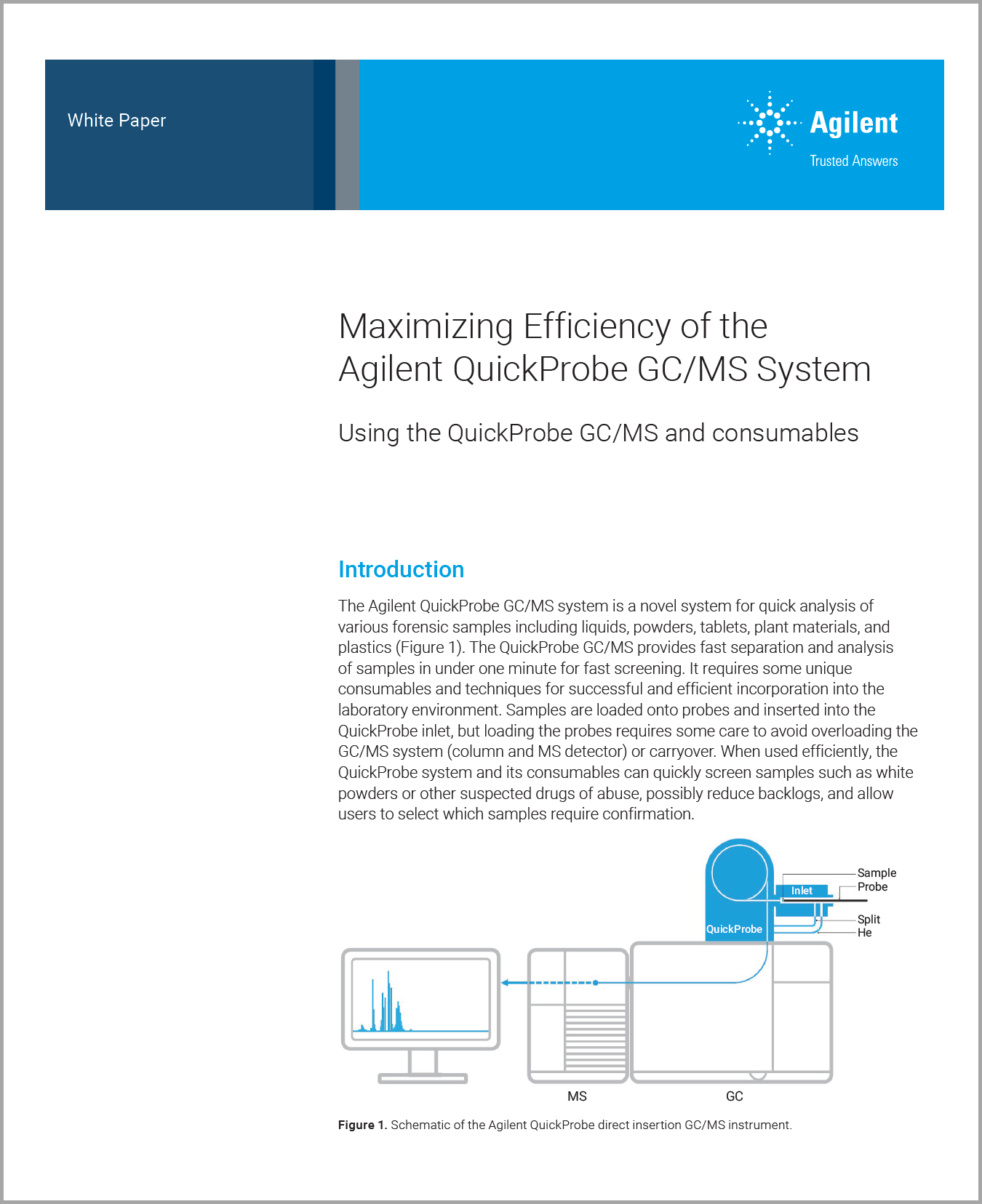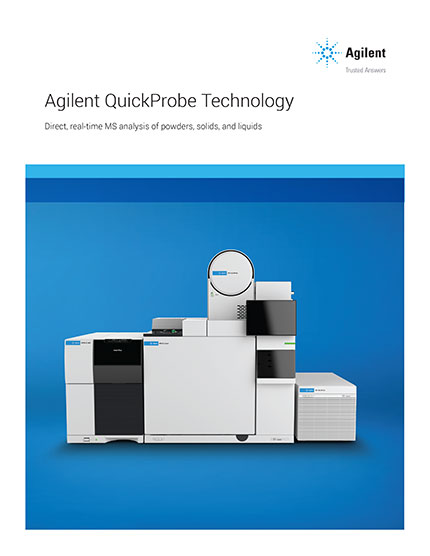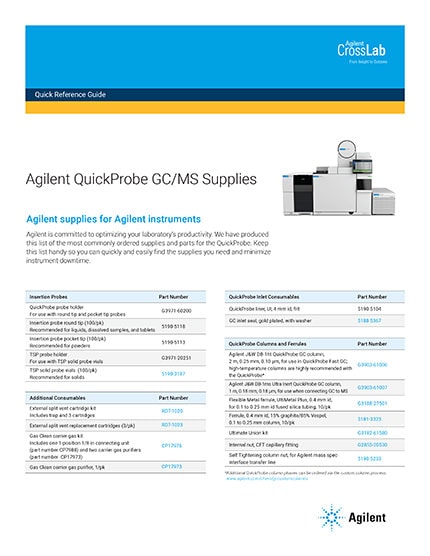Analyze Forensic Samples via GC/MS in Less than 60 Seconds

With Agilent QuickProbe, your lab can quickly and directly analyze the composition of tablets and liquids to determine whether controlled substances are present.
In fact, this real-time technique enables you to identify compounds with little or no sample preparation. The easy-to-use probe, combined with an Agilent GC/MS system, provides fast data analysis with automated library identification.
The result: near instantaneous determination of sample composition.
QuickProbe Resources
Learn more about QuickProbe technology.
See how QuickProbe can lighten your load:
Conquer your caseload

Is your forensic lab struggling with a growing caseload of complex samples? With QuickProbe, you can enjoy the speed and simplicity of direct sample analysis on a GC/MS platform that has been a workhorse in your laboratory for decades.
Achieve separation in under a minute
QuickProbe includes our innovative sample introduction technology and provides rapid heating mounted onto the Quick GC (with a short separation column). It interfaces to your standard Agilent GC/MS to obtain in-vacuum electron ionization, followed by quadrupole-based mass analysis. QuickProbe can be run without changes to the existing GC column, in under a minute.
Identify compounds with confidence using electron ionization libraries

After components in the mixture are separated by GC and quickly identified by MS detection, QuickProbe allows for fast data analysis, using an EI library such as NIST or Wiley to identify names and structures, even at the isomer level.
Use specialized columns and consumables

For each sample type, Agilent offers a probe and probe holder that enable rapid sample analysis. The QuickProbe inlet also utilizes a newly designed fritted liner with touchless packaging to prevent any large particulates from contaminating the Quick GC column. Two off-the-shelf column types are available for the Fast GC, and custom columns may be made to order.
QuickProbe technology was developed by Professor Aviv Amirav at Tel Aviv University. See the article "Open Probe Fast GC-MS: Combining Ambient Sampling, Ultra-Fast Separation, and In-Vacuum Ionization for Real-Time Analysis" by U. Keshet, T. Alon, A. B. Fialkov, and A. Amirav, in the Journal of Mass Spectrometry 52, 417-426 (2017).
For Forensic Use








